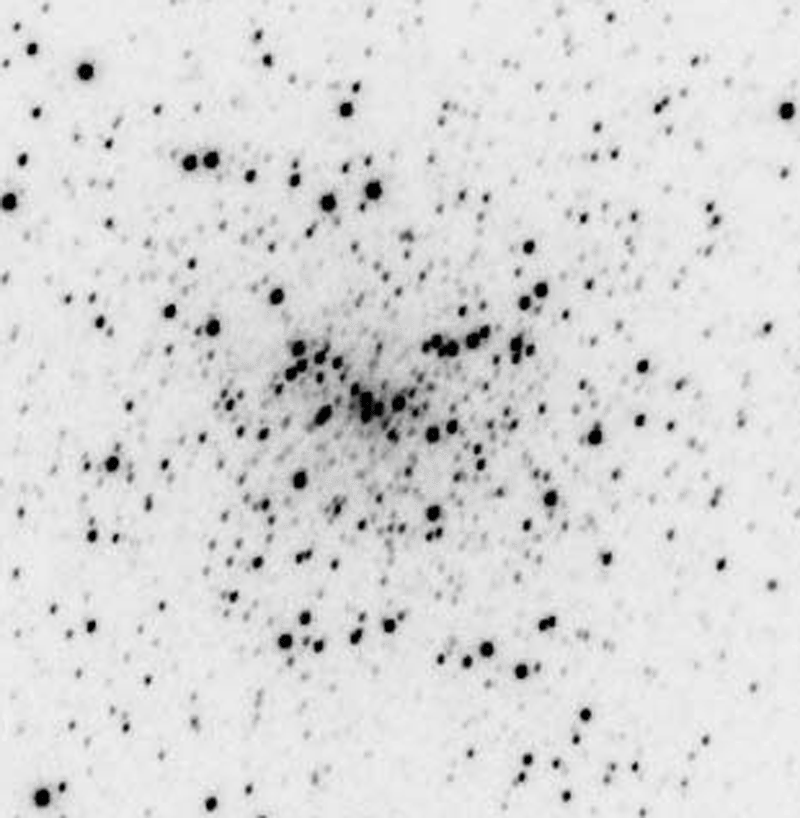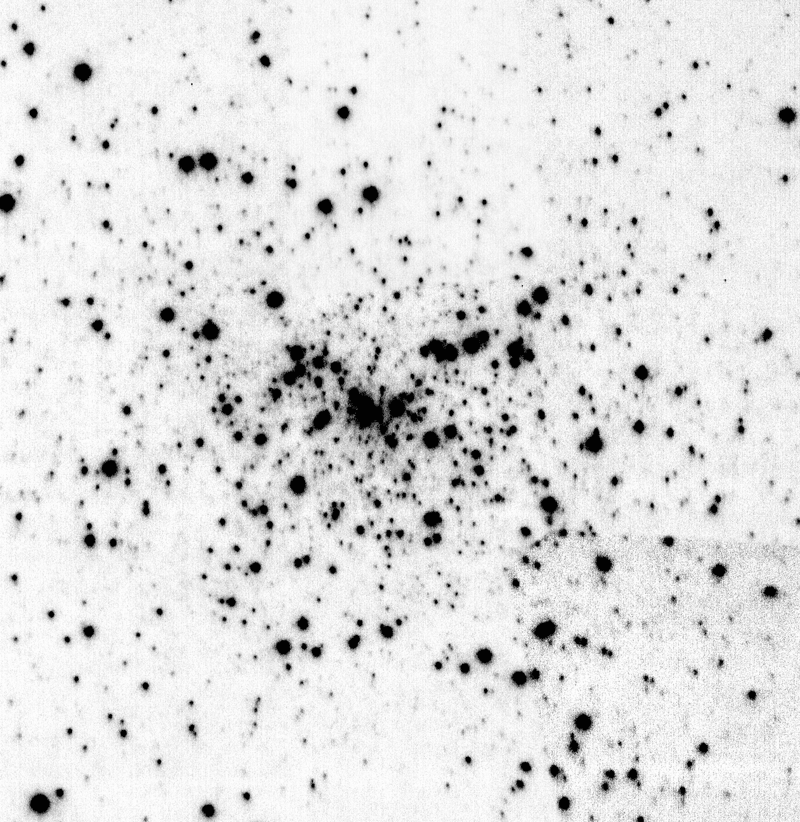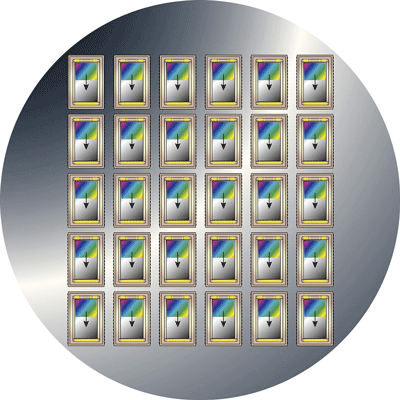Potential for Wide field Surveys
The Lucky Image Selection method can be applied to most kinds of imaging. For
example, we can use a CIRSI type approach, with an array of L3CCDs each
selecting their own Lucky images which are then mosaiced after the exposure. We
use 6 pointings to cover entire field of view. In one night can survey to very
faint limits and with excellent resolution using the methods outlined elsewhere.
We have already made a mosaic of 9 fields in the globular cluster M15, and
compared it with an image taken with a conventional CCD camera on the same
telescope at the same time.
In each of the nine fields around the core of the globular cluster we used an 80
second run with 10% selection to produce each of the nine fields. These were
then merged in the computer to produce a composite Lucky image that covers just
under one arc minute square. The first image was taken on the same telescope
with the standard CCD camera that is use there for general-purpose imaging. It
is a thinned (back illuminated) 1024 by 1024 CCD and it was used image the
centre of the globular cluster with an image scale of six pixels per arc second.
The seeing was approximately 0.6 arc seconds as measured on that camera, and a
sequence of Lucky images were taken immediately after the standard camera image
was recorded.
If you move the mouse on and off the image below you will see it change from the
original standard camera image into the high-resolution Lucky mosaic image and
back again.
If the "mouse-over-image" trick does not work, then
click here for the image from the Standard
CCD camera, and click here for the Lucky
Imaging Mosaic.

 CIRSI instrument. This has the
sensitive areas of the detectors separated from one another by slightly less
than the width of the detectors in one direction and slightly less than twice
the height of the detectors in the other direction. By using six different pointings of the telescope images may be obtained over the whole sky. Each
detector will have its own moments of excellent seeing and its own moments of
very poor seeing. At the end of the sequence of six pointings we will have
observed the entire region of the sky with the full resolution of the Lucky
technique and will be able to produce images over very wide fields. For example
with an array of 96 CCDs each of 1024 by 1024 pixels, in an array of 12 by 8 it
would be possible to survey one quarter of the square degree in one night to
limiting magnitude in the region of I ~ 24. The sort of mosaic would look rather
like that shown in the following image:
CIRSI instrument. This has the
sensitive areas of the detectors separated from one another by slightly less
than the width of the detectors in one direction and slightly less than twice
the height of the detectors in the other direction. By using six different pointings of the telescope images may be obtained over the whole sky. Each
detector will have its own moments of excellent seeing and its own moments of
very poor seeing. At the end of the sequence of six pointings we will have
observed the entire region of the sky with the full resolution of the Lucky
technique and will be able to produce images over very wide fields. For example
with an array of 96 CCDs each of 1024 by 1024 pixels, in an array of 12 by 8 it
would be possible to survey one quarter of the square degree in one night to
limiting magnitude in the region of I ~ 24. The sort of mosaic would look rather
like that shown in the following image:

